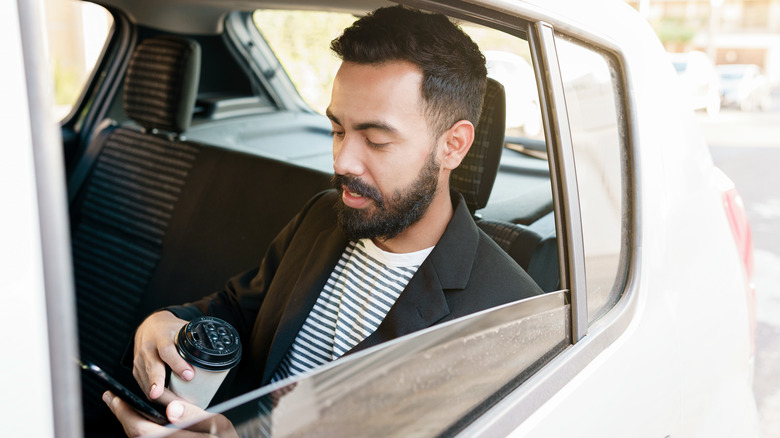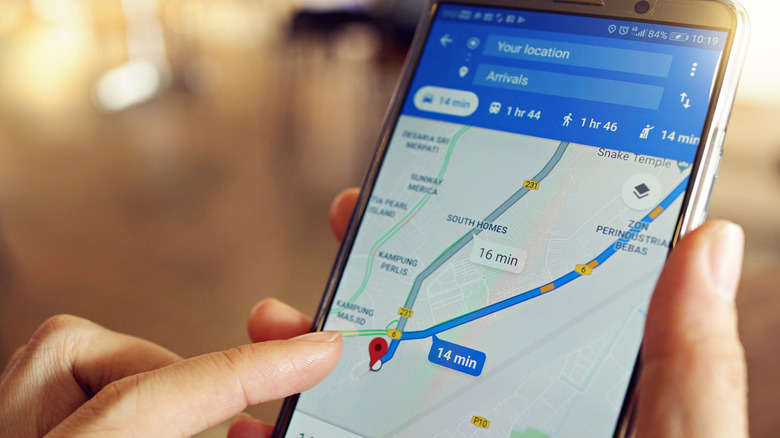How To Use Your Phone To Pay For Parking With Google Maps
Google Maps is often used as a simple and convenient source of directions to a place, building, or so on. It's certainly well-equipped and convenient to provide just that. According to iMapping (via Web Tribunal in March 2023), it seems to have cornered the market of comparable GPS navigation apps: 154.4 million people use Google Maps every month.
Are they simply inputting directions to an unfamiliar road, or looking for the nearest McDonalds? Well, in millions of those cases, they surely are. There's much more to Google Maps than just this, however. Savvy users can get much more out of the convenient travel companion, even doing things like paying for parking right in the app.
As any driver will tell you, the parking situation is one of the most troublesome aspects of travel, particularly to somewhere new. Google Maps can streamline the process by connecting and paying for your spot.
Paying For Parking Via Google Maps
Paying to park directly through compatibility with ParkMobile and Passport was added to Maps in February 2021. To do this, thanks to the convenience of Google Pay, drivers will just need to hit the "Pay for Parking" button. This may not be available yet, depending on how far you are into your journey (naturally).
All you will need after that is an idea of how long you'll be staying, as the length of time will need to be inputted alongside the number of the meter you're parked at. There's no need to worry about being delayed once you're out of your car: if you won't be back before the time you originally allotted expires, you can add more from this screen.
With those initial parking details inputted, though, the user just needs to confirm payment. With that authorized, you're free to park up and leave, all without any app-hopping at all. As the service is rolled out, it may require specific details relating to the area you're in (such as parking space or zone).
Available on Android Google Maps in a selection of cities in the United States, and iOS compatibility coming "soon," it allows more and more people to quickly and easily park without interacting with others or touching public devices.

